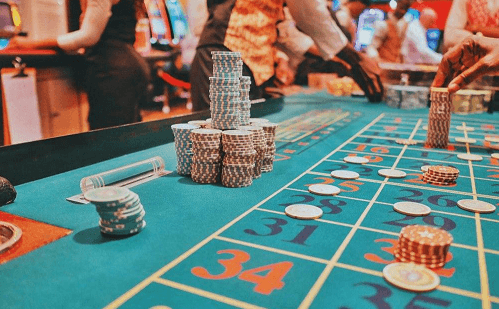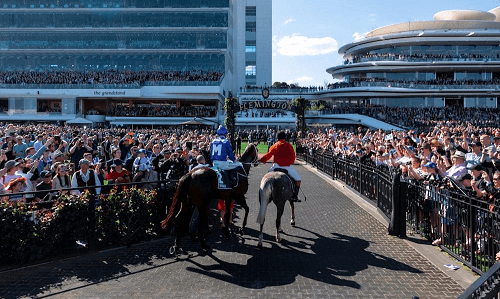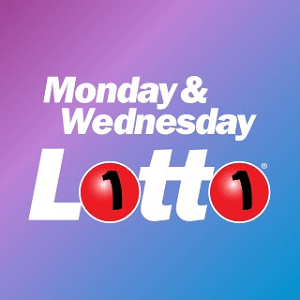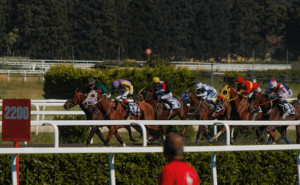Australia's Gambling Insights

Curious about the latest facts and figures regarding the gambling scene in Australia? This article unravels the key stats and major highlights from Down Under. We'll uncover how the landscape has transformed, particularly in the wake of the pivotal year 2020.
The onset of COVID-19 caused significant changes in how Australians gambled. The pandemic-induced lockdowns and health directives resulted in dramatic shifts in betting habits. Traditional land-based venues saw closures, while there was a notable surge in online gambling.
Additionally, Australian sports enthusiasts who were once focused on leagues such as the AFL and NRL started exploring other betting domains like virtual sports and Esports.
In the aftermath of the pandemic, new trends are making waves in Australia's gambling world. Cashless gambling is gaining momentum, and there's an increasing focus on the influence of advertising and the exposure of betting odds to at-risk individuals. This guide delves into these topics and presents the latest Australian gambling statistics for 2024.
Highlights of Australian Gambling Stats for 2024
Want to grasp the overall picture of Australia's gambling market? Below, we compile a snapshot of essential statistics and gambling behaviors among Australians, setting the stage for the rest of our discussion.
- Over a quarter (27.50%) of young adults in Australia engage in gambling
More than one in every four individuals between 18 and 25 regularly takes part in gambling activities.
- Nearly two-thirds (64.9%) of problem gamblers in Australia are men
This insight comes from research conducted by the Australian Institute of Family Studies.
- The average financial loss per individual from assorted gambling activities in Australia totals $1,067.70
This figure encompasses slot machines, lottery tickets, instant tickets, sports wagering, casino games, keno, and more.
- Queensland leads with the highest count of traditional casinos
This region boasts four major casino establishments, surpassing New South Wales, the Northern Territory, and Tasmania by two venues.
- The casino tourism sector in Australia is projected to flourish from 2022-2032
Recent analytics herald a bright future for Australia's casino tourism, predicting it will grow at an annual rate of 6.8%.
Spending and Loss Patterns in Australian Gambling

To gain deep insights into Australia's gambling sphere, let's explore the amounts punters spend and lose on various gambling products. A plethora of data points delve into Australia's gaming expenditures.
The Australian Institute of Health and Welfare compiles detailed annual reports on gambling expenditure. Their latest report scrutinizes the financial outlays and losses of Australian gamblers during the 2019/2020 period.
Aussie gamblers experienced a net loss of $21.2 billion, a decrease from the previous year's $25.9 billion. It's crucial to factor in that the 2019/2020 data encompasses the challenging times of COVID-19 restrictions, which greatly impacted gambling spending. Over a longer timeline, however, these figures are eclipsed by the $22.9 billion losses recorded back in 2001/2002.
Let’s uncover which gambling activities incurred the most significant losses within the Australian market. Below, we outline the gambling avenues that produced the highest per capita losses in 2019/2020:
| Gambling Product | Net Loss Per Capita |
| Gaming Machines | $512.60 |
| Lottery Games | $131.90 |
| Sports Betting | $229.60 |
| Casino Gaming | $176.60 |
| Keno | $15.40 |
| Other Gaming | $1.70 |
| All Gaming | $1,067.70 |
The given data indicates that nearly half of the gambling losses suffered by the average Aussie player are linked to pokies, or gaming machines. In contrast, almost a fifth of their losses arise from betting on sports.
How does the spending differ across Australian territories? Fortunately, data from AIHW provides a breakdown of average losses by state and territory as of 2019/2020:
| State/Territory | Total Net Losses (2019/20) |
| New South Wales | $9.6 billion |
| Victoria | $4.6 billion |
| Queensland | $3.9 billion |
| South Australia | $1 billion |
| Western Australia | $1.4 billion |
| Tasmania | $0.3 billion |
| Australian Capital Territory | $0.3 billion |
| Northern Territory | $0.2 billion |
It's important to be cautious when interpreting state-wise data, as each jurisdiction has its distinct method of tracking gambling expenditures. Gambling laws can also vary significantly across states, which is why many betting firms are registered in the Northern Territory, allowing net losses to rise from 2010/11 to 2018/19 before the 2019/20 decline.
Statistics on Australian Casinos

The AGRC highlights a decline in traditional casino visits among Australians over the last decade, while online gambling for sports and horse racing has been on an upward trajectory.
The backbone of revenue for physical operators remains the electronic gaming machines. Statista reports that the country houses roughly 2,934 hotels with gaming setups alongside 1,840 clubs offering gaming nationwide.
As for standalone casinos, the number of operating venues varies. As of mid-2020, Queensland boasted the most active casinos, with four locations, followed by New South Wales, Northern Territory, and Tasmania, each with two.
South Australia, Victoria, Western Australia, and the Australian Capital Territory each accommodate one casino.
Amongst casino enthusiasts, Crown Casino Melbourne is renowned as the top gambling destination Down Under. According to Future Market Insights, which deals with Australian gambling statistics, the casino tourism sector's value stood at around $15.3 million in 2022 and is expected to grow to $27.77 million by the next decade.
Exploring Australian Online Casinos
It’s essential to clarify the legal status of online gambling in Australia. Currently, local online casino operations are banned, following the enactment of the 2001 Interactive Gambling Act. This legislation forbids any Australian-based online casinos from functioning.
However, there exists a noteworthy loophole. While it's illegal for Aussie operators to provide services, Australians can still legally gamble at offshore online casinos.
Recent data from the Australian Institute of Health and Welfare shows that participation in gambling activities decreased from 64.3% in 2010/11 to 56.9% in 2018/19, largely due to a drop in land-based gambling. But online gaming transactions grew by 9.4% during the same timeframe.
Findings from the Australian Government Department of Social Services in 2022 reveal that over one in ten Australians (11%) engaged in some sort of online gambling over the past six months.
Discovering Popular Gambling Products in Australia

Based on 2022 data from the Australian Institute of Health and Welfare, 73% of Aussie adults surveyed admitted to placing a wager on at least one gambling platform in the previous year.
Outlined below are the preferred gambling products identified from the latest surveys by AIHW:
| Gambling Product | Active Players (%) |
| Lotteries or Scratchies | 63.8% |
| Horse Racing | 38.1% |
| Sports Betting | 33.8% |
| Poker Machines | 33.4% |
| Keno or Bingo | 29.8% |
| Greyhound Racing | 24.4% |
| Harness Racing | 22.5% |
| Casino Table Games | 22.4% |
| Novelty Betting | 17.2% |
| Online Casino Games | 17% |
| Other Gambling | 18.5% |
The statistics indicate that over sixty percent of Aussies have participated in lottery games or purchased scratchies over the past year. In 2022, these were the most favored gambling choices in Australia.
Scratch-off tickets maintain a lasting appeal due to their instant rewards. You can buy them at a nearby store or online and gain instant results. With scratchies, it’s all about quick satisfaction, making them a hit with time-crunched and casual gamblers, as evidenced by gambling data.
Lottery games are equally adored in Australia because of their immense prize potential, whether it's cash, luxury items, or dream vacations. They offer life-changing opportunities with minimal entry barriers.
Interestingly, horse racing draws more Aussie bettors compared to other sports wagering options. This sport is deeply embedded in the national culture and history, hosting celebrated events like the Melbourne Cup, which sparks interest among both serious and casual spectators each year.
Emerging Gambling Trends
It's crucial to delve deeper into key issues within Australia's gambling sector. Below, we analyze three dominant trends impacting the industry today and discuss their potential repercussions.
Cashless Gambling
Cashless gambling is emerging as a major trend within Australia's gambling landscape. Data from a New South Wales trial involving 4,500 of its 86,872 pokies highlights this shift towards cash-free gaming.
The cashless gambling concept first appeared a few years ago. In 2019, Victoria led the charge by introducing cash-free systems in its casino network as a measure against money laundering.
Since that time, several other states and territories across Australia have embraced this approach. Tasmania plans to implement a universal cashless betting limit to safeguard vulnerable gamblers.
| Timeframe | Cashless Betting Limit |
| Daily | $100 |
| Monthly | $500 |
| Yearly | $5,000 |
Remarkably, those intending to exceed Tasmania's gambling expenditure limit will need to verify their income first.
The Rise of Gambling Marketing
In the world of gambling in Australia, a troubling trend is emerging: consumers are facing an overwhelming amount of gambling promotions. This not only appears in TV spots and social media ads but also on various websites flaunting bonuses and special offers to entice users into betting. There's also a noticeable increase in the visibility of betting brands, thanks to their growing involvement in sponsoring sports leagues, events, and athletes.
A Nielsen study, funded by the Australian Communications and Media Authority (ACMA), revealed that over a million betting ads were broadcasted on free-to-air radio and television between May 2022 and April 2023. ACMA has projected that these advertising efforts could exceed a staggering $238 million, aiming to lure both current and former gamblers back into the betting fold.
These numbers don't take into account the large number of gambling ads that grace satellite and subscription-based TV, as well as streaming services.
Backing up this research is Sportsbet, one of Australia's major online sports betting entities, which shows a significant increase in its marketing budget by $19 million in the first half of 2023.
The use of Gaming Machines for betting is gradually declining.
The latest information from the Australian Institute of Health and Welfare highlights a sustained decrease in real monetary expenditure on gaming machines, such as pokies.
In its heyday, spending on gaming machines in Australia hit $14.3 billion during 2004/05, right before the surge in online casino popularity. A minor decrease was seen by 2006/07 with a total of $14.1 billion, but by 2018/19, this amount had dwindled to $12.9 billion.
Despite the decline in gaming machines, the overall gambling expenditure in Australia increased from $23.9 billion to $25.9 billion in the same timeframe, suggesting Australians are diversifying their gambling activities.
Final Words
In conclusion, the biggest shift in Australian gambling is the surge in online betting. The challenge for authorities and industry regulators is to handle the 'black market'—offshore operators catering to Australian bettors without needing to comply with regulations or rules.
Addressing the overwhelming presence of gambling adverts is another critical concern, ensuring that future lawful gamblers in Australia can indulge in their passion when they're truly ready.
Moreover, the concept of cashless gambling could yield public health benefits, yet there remains a substantial challenge in ensuring that betting limits are balanced and safe for all involved.
Now that you're informed about the current gambling statistics in Australia, be sure to explore the following relevant articles for additional insights into the gambling landscape in Australia:






